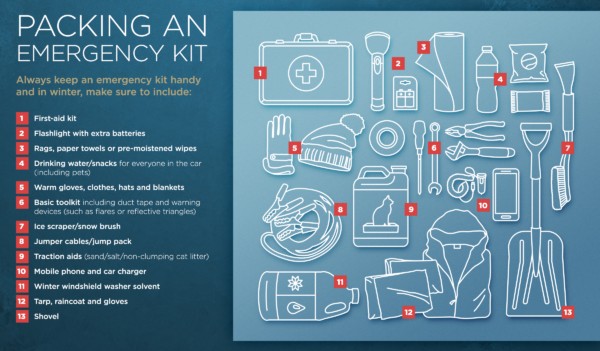Driving in snow presents unique challenges that demand extra caution and skill. As your trusted auto repair experts at keyfobx.com, we understand the risks and want to equip you with essential knowledge to navigate snowy roads safely. Winter weather can turn a routine commute into a dangerous situation if you’re unprepared. This guide, based on expert recommendations, will provide you with actionable steps to confidently handle driving in snow, ensuring your safety and the safety of others on the road.
Before you even start your engine, preparation is key. Ensuring your vehicle is winter-ready is the first crucial step. Schedule a check-up at a certified auto repair shop to verify your car’s essential systems are in top condition. This includes your battery, tires, brakes, fluids, and windshield wipers. Specifically, for snowy conditions, consider using winter tires which offer superior grip compared to all-season tires when temperatures drop and snow accumulates.
Always check the weather forecast before heading out. Understanding the expected conditions—heavy snow, freezing rain, or black ice—will help you decide if your trip is necessary and allow you to plan accordingly. If severe weather is predicted, it’s often best to postpone your journey. Staying informed also means checking road conditions along your route and at your destination. Many transportation departments provide real-time updates on road closures and conditions, which can significantly impact your travel plans.
Communication is another vital aspect of preparation. Let friends or family know your route, destination, and estimated arrival time. This ensures that someone knows your whereabouts and can check in on you if your journey takes longer than expected or if you encounter problems. Keeping your phone charged and carrying a car charger is also essential for staying connected in case of emergencies.
Once you’re on the road, adapting your driving technique to snowy conditions is paramount. The golden rule for driving in snow is to slow down. Reduced traction means everything takes longer – accelerating, braking, and turning. Drive well below the posted speed limit and increase your following distance significantly – at least 8-10 seconds behind the vehicle in front of you. This extra space provides a buffer in case you need to brake suddenly.
Gentle and smooth inputs are crucial when driving in snow. Avoid sudden acceleration, hard braking, and abrupt steering. These actions can easily cause your vehicle to lose traction and skid. Accelerate gradually and brake gently. If you have anti-lock brakes (ABS), apply firm and steady pressure to the brake pedal. If you don’t have ABS, pump the brakes gently to avoid locking up the wheels.
Visibility is often severely reduced during snowfall. Ensure your headlights are on to see and be seen. Low beams are generally best in snow as high beams can reflect off the snowflakes and reduce visibility further. Use your windshield wipers and defroster to maintain a clear view of the road. Consider using snow wipers designed to prevent ice and snow buildup.
What if, despite all precautions, you find yourself stranded in winter weather? The most important advice is to stay with your vehicle. It provides shelter and is easier for rescuers to spot than a person walking in the snow. Do not attempt to walk for help in a blizzard; visibility can drop dramatically, and you can easily become disoriented and lost.
Signal for help. Tie a brightly colored cloth to your antenna or door handle to make your vehicle more visible. At night, turn on your dome light if possible. It uses minimal battery power and can help rescuers locate you. Use your hazard lights to alert other drivers to your situation, but be mindful of battery drain if you are stranded for a long period with the engine off.
Ensure your exhaust pipe is clear of snow and ice. A blocked exhaust pipe can cause carbon monoxide to build up inside your vehicle if the engine is running, which is deadly. Periodically check and clear the exhaust pipe if snow is accumulating around your vehicle.
To stay warm, use whatever is available to insulate yourself from the cold. This could include extra blankets, coats, hats, and gloves from your emergency kit. If you don’t have these, use floor mats, newspapers, or even seat covers to create layers of insulation. Run the engine and heater sparingly to conserve fuel, just long enough to take the edge off the cold. Be sure to crack a window slightly when the engine is running to prevent carbon monoxide buildup.
A well-stocked emergency kit is not just a recommendation; it’s a necessity for winter driving. Your kit should include:
- Cell phone car charger: To keep your communication lifeline powered.
- Flashlight with extra batteries: Essential for signaling and visibility at night.
- Reflective triangles or flares: To alert other drivers to your stranded vehicle.
- First-aid kit: For treating minor injuries.
- Drinking water and non-perishable food: To stay hydrated and maintain energy if stranded for an extended period.
- Traction aids (sand, salt, cat litter, or traction mats): To help regain traction if your wheels are spinning.
- Ice scraper and snow brush: To keep your windows clear for visibility.
- Shovel: To dig your vehicle out if it’s stuck in snow.
- Gloves, extra coats, hats, and blankets: To stay warm in freezing temperatures.

Driving in snow requires a blend of preparation, cautious driving techniques, and knowing how to handle emergencies. By following these expert tips, you can significantly reduce your risk and navigate winter roads more safely. Remember, when winter weather hits, prioritize safety over speed and always be prepared for the unexpected. Safe travels from your auto experts at keyfobx.com!
